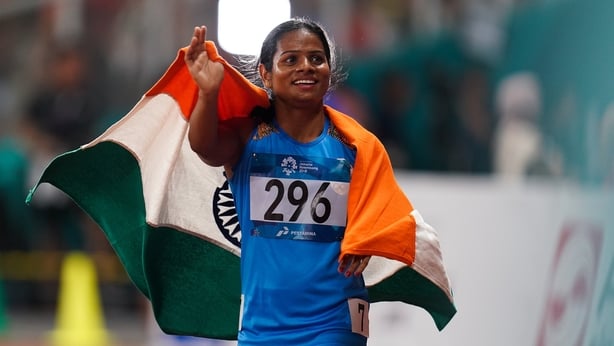World athletics's governing body the IAAF has delayed the introduction of a testosterone limit for female athletes until the Court of Arbitration for Sport has heard Caster Semenya's appeal against the rule.
The new limit, which only applies to races from 400 metres to one mile, was meant to come into force on 1 November and would require athletes to maintain their testosterone levels to below five nanomoles per litre (nmol/L) for at least six months before competing.
For affected athletes, this would mean taking hormone suppression tablets, similar to oral contraceptives.
But, with Semenya confirming her intention to challenge the rule at CAS earlier this summer, the IAAF has agreed to postpone imposing the limit until that appeal has been resolved.
For her part, Semenya, who is being supported by Athletics South Africa, has agreed to an expedited hearing, which means the matter should be resolved on or before 26 March, next year.
In a statement, IAAF president Lord Coe said: "Prolonging the uncertainty for athletes looking to compete in these distances next year and beyond is unfair and so we have reached a compromise with the claimants.
"We have agreed not to enforce the regulations against any athlete until the contested regulations are upheld. In exchange, they have agreed not to prolong the process. All athletes need this situation resolved as soon as possible."

With the vast majority of women having less than 1.79 nmol/L in their blood streams, the limit is intended to address the competitive advantage women with naturally high levels of the hormone are believed to possess.
These women typically have one of several rare conditions that are collectively known as differences of sex development (DSD).
Having previously relied on relatively crude measures, ranging from nude parades decades ago to chromosome testing in the 1980s, the IAAF has settled on a testosterone limit ever since Semenya burst on to the scene at the 2009 World Championships in Berlin.
Her victory there - her first of three world and two Olympic 800 metres titles - was marred by a shameful public debate about the then 18-year-old's gender.
That episode resulted in IAAF's first attempt to set a limit for testosterone and its hyperandrogenism rule was in place until Indian sprinter Dutee Chand took it to CAS in 2015.
The Swiss-based court ruled there was a lack of evidence to support the rule and suspended it for two years, pending further research.
Having asked for six more months to complete that research, the IAAF came back to CAS earlier this year with what it claimed was statistical proof that high levels of testosterone do provide an advantage and it is particularly significant on the track between 400 metres and one mile.
This evidence, however, has not been universally accepted by sports scientists, while others critics of the policy have also questioned its fairness on a more fundamental level, saying it discriminates against naturally-gifted athletes who have done nothing wrong.
In a notification sent to all of the IAAF's member federations, the doctor who led the research underpinning the rule, Stephane Bermon, said: "We recognise this five-month shift in the timetable from November to late March could result in affected athletes having to sit out the bulk of the outdoor season leading up to the IAAF World Championships, including competitions such as the Diamond League which begin in May 2019.
"The original November 1 start date was designed specifically to avoid this. Because of this, although the regulations are formally stayed pending the outcome of the CAS proceeding, the IAAF Health and Science Department stands ready to support athletes and receive biological results from individual athletes with DSDs wishing to start their six-month suppression period at any time from today.
"Athletes wishing to begin their six-month period sooner than the end of March should contact me directly."

